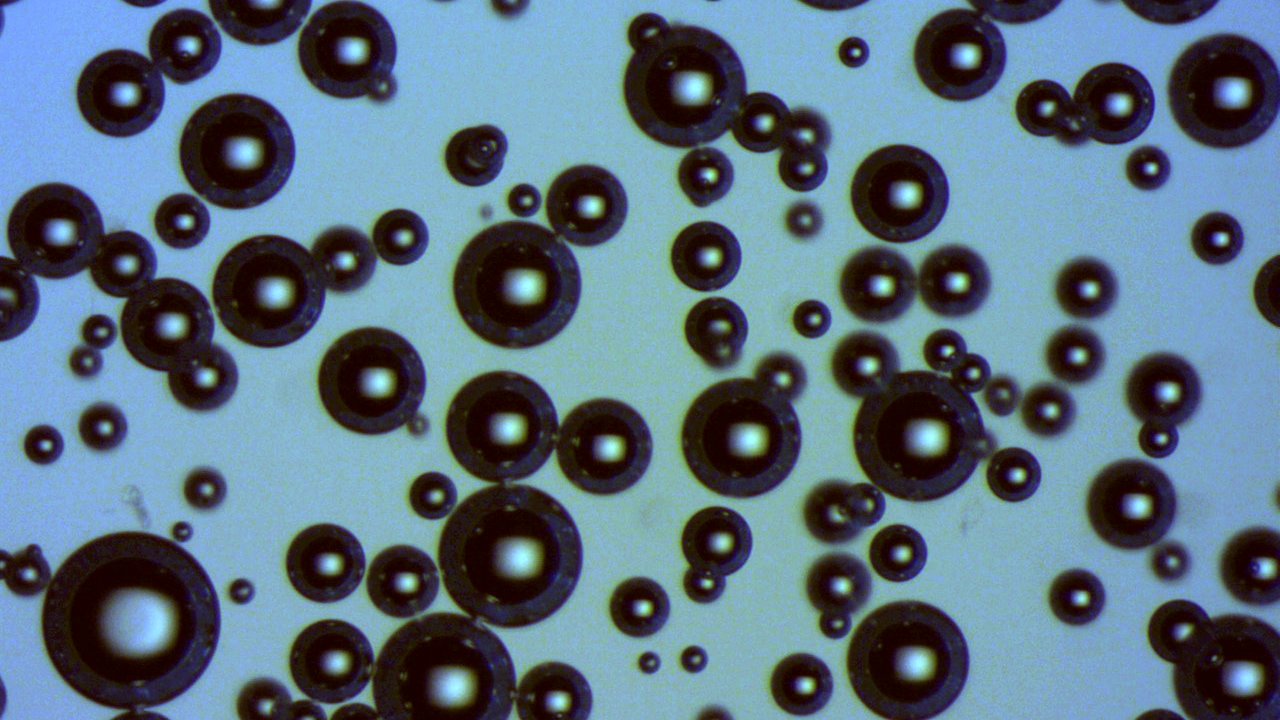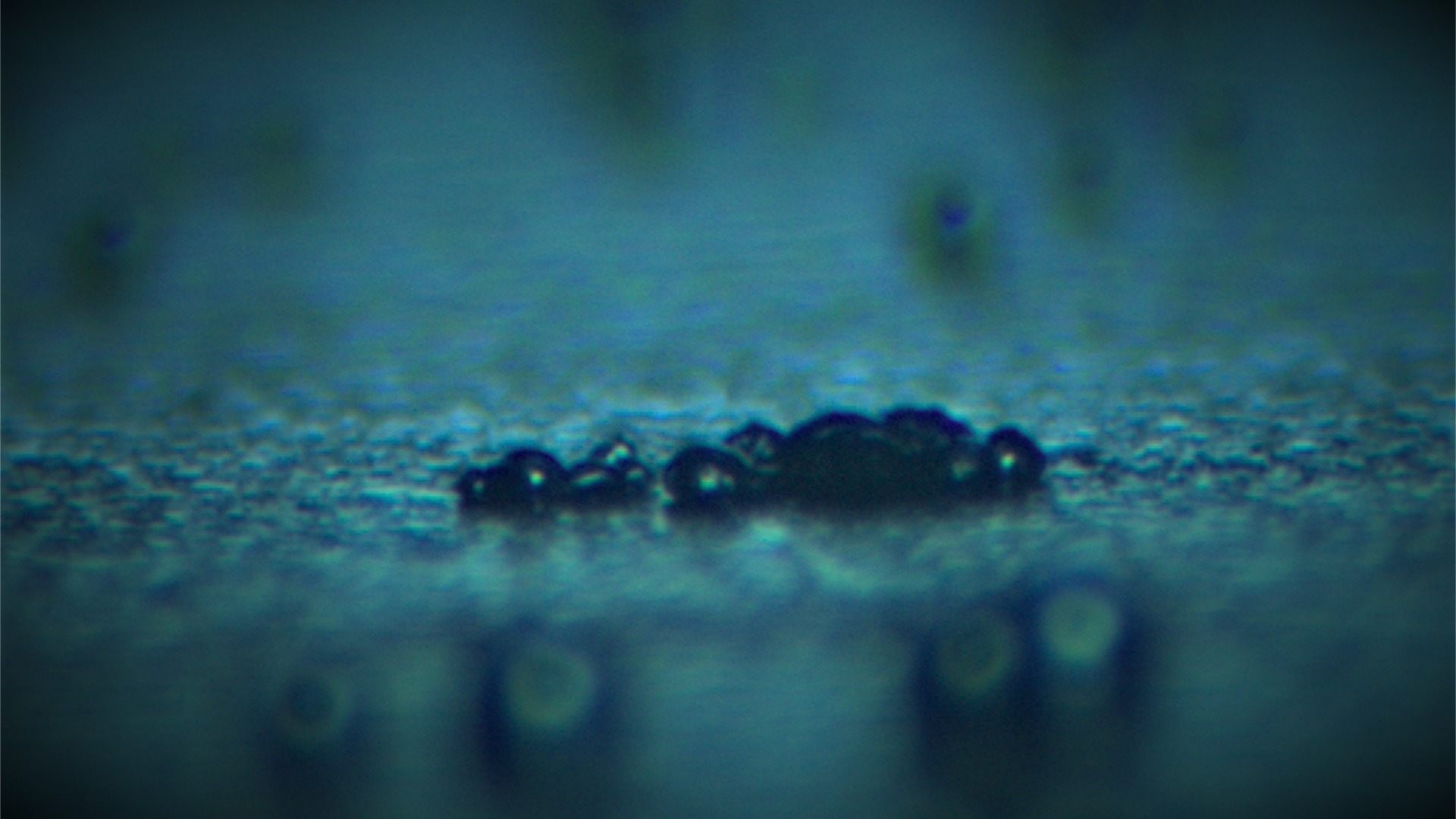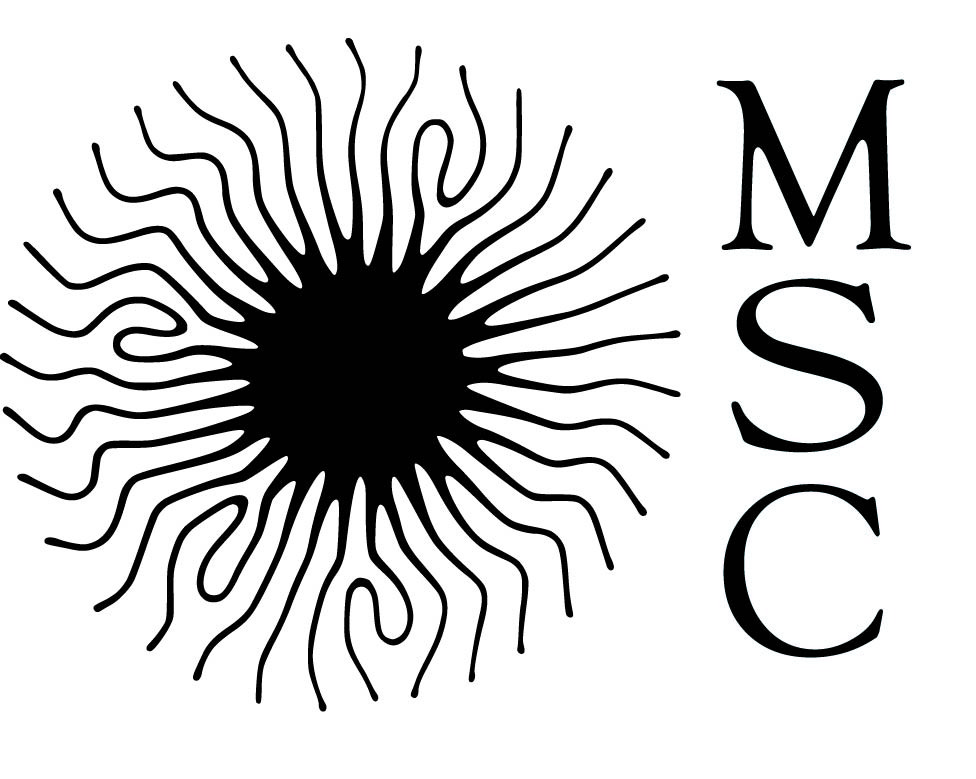
We address questions at the frontier between acoustics and soft matter. How does sound propagate through foam? What noise does a film of soap make when it bursts? Why does a drop falling into water no longer “plop” when washing-up liquid is added? How can a network of holes in a soft solid absorb acoustic energy? Do nanobubbles exist? How do you empty an air-filled micro-cavity using ultrasound?
You can find a list of our publications here.
Members
- Adrien Bussonnière, researcher
- Camille Cohen, PhD student
- Caroline Derec, assistant professor
- Vincent Gourmandie, PhD student
- Valentin Leroy, researcher

Acoustic characterization of complex media
Understanding how sound propagates in complex media enables us to develop characterization tools. We are particularly interested in aerated media, from bubbly liquids to liquid and solid foams.
Selected articles
Liquid foam in an impedance tube: speed of sound
By placing liquid foams with different air volume fractions (80 to 95%) in an impedance tube, we have shown that the speed of sound is very well described by a mixing law… with the exception of commercial shaving foams.
Reference : “Acoustic characterisation of liquid foams with an impedance tube”, Juliette Pierre, Reine-Marie Guillermic, Florence Elias, Wiebke Drenckhan and Valentin Leroy, Eur. Phys. J. E (2013) 36
PDF of the article here
Liquid foam in an impedance tube: speed of sound
By placing liquid foams with different air volume fractions (80 to 95%) in an impedance tube, we have shown that the speed of sound is very well described by a mixing law… with the exception of commercial shaving foams.
Reference : “Acoustic characterisation of liquid foams with an impedance tube”, Juliette Pierre, Reine-Marie Guillermic, Florence Elias, Wiebke Drenckhan and Valentin Leroy, Eur. Phys. J. E (2013) 36
PDF of the article here
An acoustic method for characterizing bubbly media
By measuring the speed and attenuation of sound in a bubbly liquid, we can characterize the bubbles present (air volume fraction, typical size). An acoustic method offers the advantage of being applicable in opaque media, and enables real-time monitoring.
Reference: “Time-Resolved Ultrasonic Spectroscopy for Bubbles”, Valentin Leroy, Anatoliy Strybulevych, Tomohisa Norisuye, AIChE Journal (2017)
Liquid foam in an impedance tube: attenuation
By measuring the acoustic characteristics of foams of various volume fractions and bubble sizes, we have shown that sound attenuation is partly due to thermal dissipation, and that another part remains unexplained.
Reference : “Investigating the origin of acoustic attenuation in liquid foams”, Juliette Pierre, Camille Gaulon, Caroline Derec, Florence Elias, Valentin Leroy, Eur. Phys. J. E (2017) 40
Article available on HAL.
Ultrasonic monitoring of lubricating oil aeration
Ultrasound allows real-time monitoring of the aeration of a lubricating oil entrained by a rotating pinion. It has been shown that the oil formulation has a significant impact on the quantity of bubbles entrained, but also on the size of these bubbles, which explains the differences in de-aeration times observed in previous studies.
Reference : “Detailed characterization of aeration in lubricating oils by an ultrasonic approach”, Che Zhan, A. Saint-Jalmes, M. Receveur, H. El Bahi, F. Rondelez, V. Leroy, Tribology International (2022).
Full article on HAL.

Cavitation
We are interested in the origin of micro/nanobubbles trapped within wall defects, known as cavitation nuclei.
Selected articles
Acoustic responses of underwater superhydrophobic surfaces subjected to an intense pulse
Référence : Adrien Bussonnière, Qingxia Chad Liu, Peichun Amy Tsai, JFM 2023
Acoustics of a superhydrophobic surface
When a superhydrophobic surface is immersed, a layer of air just a few microns thick is trapped. We have studied the response of this very flattened bubble to acoustic pulses ranging from simple echoes to cavitation with increasing intensity.
Reference : “Acoustic responses of underwater superhydrophobic surfaces subjected to an intense pulse“, Adrien Bussonnière, Qingxia Chad Liu, Peichun Amy Tsai, JFM 2023
Article available on HAL
Regeneration of cavitation nuclei
Heterogeneous cavitation relies on micro/nanobubbles trapped in defects and called nuclei. Until now, these bubbles were supposed to appear when the surfaces were immersed, but thanks to the use of a succession of thousands of acoustic pulses, we have shown that these nuclei can also regenerate spontaneously within the liquid.
Reference : “Cavitation Nuclei Regeneration in a Water-Particle Suspension“, Adrien Bussonnière, Qingxia Liu, Peichun Amy Tsai, Phys. Rev. Lett. 2020
Article available on HAL
Attempt to detect nanobubbles with ultrasound
The existence of highly stable sub-micron bubbles has been reported, whereas theory predicts dissolution in milliseconds. Experiments generally rely on the optical contrast between the nanobubbles and the liquid, which opens up the possibility that the nano-objects detected are not gaseous, but arise from solid or liquid contamination. We proposed to use an acoustic method, sensitive to mechanical contrast.
Reference: “Investigating the existence of nanobubbles with ultrasound“, V. Leroy and T. Norisuye, ChemPhysChem (2016)

Acoustic metamaterials
Acoustic metamaterials are media whose sub-wavelength structure confers unusual acoustic properties. We are exploring the possibilities offered by bubbles and membranes.
Selected articles
An analytical model for sound transmission through a bubble layer
Acoustic transmission through an ordered plane of bubbles passes through a minimum at a frequency above the individual bubble resonance frequency. A simple model shows that this shift is due to multiple scattering within the bubble layer.
Reference: “Transmission of ultrasound through a single layer of bubbles”, V. Leroy, A. Strybulevych, M.G. Scanlon, and J.H. Page, Eur. Phys. J. E (2009)
An analytical model for sound transmission through a bubble layer
Acoustic transmission through an ordered plane of bubbles passes through a minimum at a frequency above the individual bubble resonance frequency. A simple model shows that this shift is due to multiple scattering within the bubble layer.
Reference: “Transmission of ultrasound through a single layer of bubbles”, V. Leroy, A. Strybulevych, M.G. Scanlon, and J.H. Page, Eur. Phys. J. E (2009)
Super-absorption of ultrasound by a meta-screen of bubbles
Using the preceding analytical model, we show that acoustic absorption can be optimized by judiciously choosing the pitch of the bubble array as a function of the viscosity of the host medium. This revisits the theme of anechoic tiles used in underwater acoustics.
Reference : “Superabsorption of acoustic waves with bubble metascreens”, Valentin Leroy, Anatoliy Strybulevych, Maxime Lanoy, Fabrice Lemoult, Arnaud Tourin, and John H. Page, Phys. Rev. B (2015)
Article on HAL.
Sound absorption with solid membrane foams
It has been shown that the sound absorption performance of solid foams can be improved by the presence of thin membranes.
Reference : “Acoustic absorption of solid foams with thin membranes”, C. Gaulon, J. Pierre, C. Derec, L. Jaouen, F.-X. Bécot, F. Chevillotte, F. Elias, W. Drenckhan, and V. Leroy, Applied Physics Letters (2018)
Article on HAL.
A toy model for negative acoustic density
Acoustic metamaterials sometimes have a negative effective density. We propose a simple model to understand the origin of this phenomenon.
Reference: “A toy model for the effective density of acoustic metamaterials”, Juliette Pierre, Valentin Leroy and Benjamin Dollet, Proceedings of the Royal Society A (2022)
This article is available on HAL.

Acoustic signature of hydrodynamic events
What can acoustics tell us about hydrodynamic events, such as the bursting of a soap film, or the impact of a drop on a liquid bath?
Selected articles
The sound of a soap bubble bursting
Reference: “Acoustic Sensing of Forces Driving Fast Capillary Flows”, Adrien Bussonnière, Arnaud Antkowiak, François Ollivier, Michaël Baudoin, and Régis Wunenburger, Phys. Rev. Lett. (2020)
The sound of a soap bubble bursting
The bursting of a soap bubble is a rapid hydrodynamic event producing a characteristic acoustic signature. In this study, we show that this sound arises from the capillary force applied by the liquid film on the air and depends on the soap used. The method used here could be applied to the analysis of a variety of acoustic signatures.
Reference: “Acoustic Sensing of Forces Driving Fast Capillary Flows“, Adrien Bussonnière, Arnaud Antkowiak, François Ollivier, Michaël Baudoin, and Régis Wunenburger, Phys. Rev. Lett. (2020)
Article available on HAL.
Droplet impact on a bath: a new mechanism for creating bubbles
Reference : “A new insight on a mechanism of airborne and underwater sound of a drop impacting a liquid surface“, G. Gillot, C. Derec, J.-M. Génevaux, L. Simon, L. Benyahia, Physics of Fluids (2020)
